SILVANA MOSSANO
Reportage udienza processo Eternit Bis del 30 maggio 2022
I 392 nomi di uomini e donne del Casalese che sono elencati nel capo di imputazione del processo Eternit Bis, in cui l’imputato Stephan Schmidheiny è chiamato a rispondere della loro morte, hanno una caratteristica comune: la loro vita è finita a causa del mesotelioma, il cancro dell’amianto.
392 diagnosi diversificate per tipologia – pleura o peritoneo; epitelioide, sarcomatoide o bifasico –, ma tutte riconducibili, secondo l’accusa sostenuta dai pm Gianfranco Colace e Mariagiovanna Compare, al mesotelioma. E ogni diagnosi, dalle più datate alle più recenti, prima di essere inserita in quel nefasto elenco è passata alla valutazione degli anatomopatologi, consulenti della procura: Piergiacomo Betta (deceduto nel 2015; vagliò centinaia di casi, sia come primario di Anatomopatologia a Casale e ad Alessandria, sia come Ct del pm al Maxiprocesso Eternit di Torino), Donata Bellis e Narciso Mariani.
Ovviamente, i difensori Astolfo Di Amato e Guido Carlo Alleva hanno affidato a un proprio consulente la verifica di quelle diagnosi.
L’esito del lavoro, svolto dal professor Massimo Roncalli, anatomopatologo di chiara fama, professore straordinario all’Irccs Humanitas di Milano, è stato esposto nell’udienza del 30 maggio davanti alla Corte d’Assise di Novara.
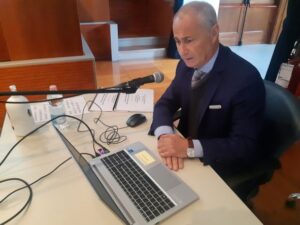
Al consulente è stata messa a disposizione la documentazione (vetrini e cartelle cliniche) negli uffici della polizia giudiziaria della procura di Torino; l’ha esaminata tra il 3 settembre 2021 e il 21 gennaio 2022. Si trattava dello stesso materiale esaminato in precedenza dai consulenti dell’accusa: Roncalli ha concluso in questo modo: dei 392 casi ha potuto tener conto di 354, mentre per i restanti 38 non ha più trovato materiale adeguato o disponibile per svolgere un esame accurato ed esauriente.
Per tutti i 354 casi ha espresso una valutazione diversificata in tre livelli: 1) certa (equivalente a una «diagnosi inequivocabile»), 2) probabile, 3) possibile (cioè con un grado di incertezza intorno al 50 percento).
In numeri e percentuali, ecco l’esito finale dell’esame di Roncalli: su 354 casi, 140 sono valutati come certi (pari a circa il 40%), 116 probabili (pari al 32%), 98 possibili (pari al 28%).
Prima di esporre il risultato, il consulente ha evidenziato le premesse del suo lavoro. «Un patologo – ha detto – ha il dovere etico di provare che una diagnosi è incontrovertibilmente corretta. L’esperienza conta – ha proseguito –, ma di più contano le indagini strumentali che consentono di “oggettivare” la diagnosi al di là della semplice esperienza e autoreferenzialità del patologo stesso».
La tecnica diagnostica per eccellenza è oggi l’immunoistochimica.
Il professore ha sottolineato che le sue valutazioni sono state fatte «con gli occhiali dell’oggi», cioè verificando, attraverso i «marcatori» più attuali, anche le diagnosi meno recenti, per accertare che si trattasse davvero di mesoteliomi e non, invece, di altre forme tumorali che hanno sintomi simili e possono essere confuse con il mesotelioma. Ad esempio: adenocarcinomi polmonari e linfomi, carcinoma della mammella, ovarico o polmonare, oppure metastasi pleuriche derivanti da tumori primari gastrointestinali, o del rene, dell’ovaio, della prostata, del pancreas.
«Non sarei in grado di indossare gli occhiali del passato – ha sottolineato il consulente -: se lo facessi, commetterei delle imprecisioni e non sarei oggettivo nelle mie valutazioni».
Vero. E, nell’indossare gli «occhiali dell’oggi», dei 354 casi esaminati il professor Roncalli non ne ha escluso nessuno, pur con gradi diversi di fondatezza rispetto alle valutazioni dei consulenti della procura che avevano esaminato quei casi tempo addietro. Non c’è motivo di dubitare che anche i consulenti dell’accusa abbiano utilizzato gli «occhiali dell’oggi», peraltro Roncalli non ha sollevato dubbi in tal senso.
In passato non c’era l’immunoistochimica, non c’erano i marcatori di oggi (e si sta studiando per trovarne di più avanzati), ma i patologi facevano riferimento, comunque, alle migliori tecniche diagnostiche dell’epoca: merita ricordare che l’Anatomia Patologica di cui era primario Betta aveva la certificazione di qualità presso terzi, da lui stesso pretesa, quando addirittura non ne era ancora dotata l’Università. In più, però, gli esiti strumentali sono stati esaminati con la «lente» dell’esperienza. Spiegò l’anatomopatologa Donata Bellis nell’udienza del 22 novembre scorso: «Se l’unica, esclusiva dirimente fosse la colorazione dei vetrini con la tecnica immunoistochimica, basterebbe una macchina che svolge questa funzione e non sarebbe necessario un anatomopatologo. La diagnosi si forma e si conferma valutando e confrontando più aspetti: dalla morfologia del tumore, agli esami radiografici (rx, tac, pet), citologici e istologici, con ulteriore, se ritenuta necessaria dagli esperti, riverifica tramite l’immunoistochimica».
Il professor Roncalli ha svolto il compito a lui affidato dai difensori con scrupolo e rigore, prendendo in considerazione «più marcatori a elevata sensibilità e specificità, perché non esiste un marcatore ideale presente su tutti i mesoteliomi».
Il consulente della difesa, oltre alla ripartizione delle sue valutazioni in casi «certi», «probabili» e «possibili», ha anche fatto una ulteriore suddivisione in tre decadi: i casi tra il 1990 e il 1999, tra il 2000 e il 2009 e tra il 2010 e il 2019. E ha evidenziato «maggiori debolezze diagnostiche» tra i casi della prima decade.
Questo perché, ha detto il professore, «il mesotelioma è una patologia rara, poco familiare, e quindi la diagnosi è difficile». Ha ripetuto più volte che i sintomi non bastano a stabilire che si tratta di un mesotelioma, e anche l’evidenza di un versamento pleurico in una radiografia o in una tac possono essere altro. Ad esempio, ha riferito che un versamento pleurico, nella maggior parte dei casi, è dovuto a una semplice pleurite, cioè una patologia infiammatoria della pleura. Le sue parole: «Fortunatamente, il mesotelio raramente va incontro a una trasformazione maligna. Molto spesso è “solo” irritato da fenomeni infiammatori (pleurite)».
Lungi, come giornalista, dal contestare le affermazioni dell’autorevole scienziato: il linguaggio del professor Roncalli è quello della scienza, della «grammatica», potremmo dire. E ne abbiamo massimo rispetto. Ma esiste, su un piano non inferiore, quello dell’esperienza, della «pratica», diciamo. E merita uguale considerazione.
Definire il mesotelioma, pur in senso tecnico, una patologia «poco familiare» provoca un sussulto a Casale Monferrato e dintorni, dove è difficile trovare una famiglia che non abbia patito a causa del mesotelioma.
E dire, poi, che «molto spesso» il versamento pleurico è causato da pleurite provoca un’altra scossa.
Chi sul referto della radiografia legge «versamento pleurico» (piccolo, modesto, esteso, poco conta) non si fa illusioni. Quante candele accese di chiesa in chiesa a invocare, nell’attesa di un esame citologico o istologico, una pietosa e auspicabile diagnosi di pleurite! Ma quante volte a quel «versamento» è corrisposta «solo» una pleurite? Difficile, a Casale e dintorni, trovarne memoria.
Ora, siamo consapevoli e, anzi, fermamente d’accordo, che l’emotività non può essere guida per i giudici. Sono indispensabili i dati oggettivi. E bene ha fatto il professor Roncalli a esporre le sue valutazioni oggettive. Altrettanto oggettive sono quelle degli anatomopatologi consulenti della procura. Così come oggettive – coscienziosamente e deontologicamente – devono essere, si spera, le risposte ai quesiti fornite da tutti i consulenti, di qualsiasi parte e su qualsiasi materia.
Però c’è anche il contesto – vitale, emotivo, affettivo -, da valutare quanto la scienza.
Il contesto è l’armonica convivenza fondata sulla regolamentazione dei rapporti tra le persone. Se questa armonia viene scossa da un torto, il tribunale è la sede convenuta per stabilire chi lo ha commesso. La finalità, in un processo in tribunale, è quella di perseguire la giustizia. Per risarcire chi? Coloro che il torto lo hanno subito.
Ecco perché la scienza oggettiva non può che coniugarsi con l’esperienza viva.
Quello che va valutato e giudicato, nel processo Eternit Bis di Novara, è specificatamente il contesto casalese. Non uno astratto qualsiasi. In questa realtà si innestano i racconti dei testimoni, dei famigliari delle vittime o delle vittime stesse quando erano in vita, e non valgono meno degli accertamenti, indiscutibili ed essenziali, degli esperti.
Nella collettività casalese, 392 decessi con quei sintomi, quelle diagnosi in epoche diverse, quelle morti sono la conseguenza di una esposizione all’amianto che è stata diversa che altrove. Anche a Milano e in altre metropoli o grandi città c’era una diffusione «fisiologica» di fibra di amianto, ma evidentemente a Casale, piccolo centro di provincia, ce n’era di più. E lo dimostra il fatto che ci si è ammalati di più. E si è morti di più. Come la giovane di 38 anni, che era nata nello stesso anno, 1976, in cui l’imprenditore Schmidheiny aveva assunto direttamente la gestione dell’Eternit.
Certo, ci sono tumori «camaleonte», che sembrano mesoteliomi e, invece, sono altre forme di cancro: ma dobbiamo credere che a Casale ci sia stata una così elevata concentrazione e ripetitività di «falsi positivi» all’esame istologico? E come lo spiegheremmo?
CONTROESAME DI TRE CONSULENTI
Nell’udienza del 30 maggio sono stati sottoposti a controesame, da parte del pm Gianfranco Colace, tre consulenti della difesa che avevano esposto le loro relazioni in procedenza. In particolare: l’igienista industriale Danilo Cottica, l’ingegner Giuseppe Nano e Pierluigi Nicotera, esperto di malattie neurodegenerative dell’Università di Bonn.
Il professor Nicotera, rispondendo alle domande del pm, ha ribadito la tesi della «cromotripsi» che scatena il mesotelioma; ha insistito che «basta una sola esposizione all’amianto» per ammalarsi e che «l’accumulo successivo di esposizione non è rilevante per la formazione del tumore e della sua progressione». Tesi di cui i consulenti del pm, a suo tempo, avevano dimostrato l’insostenibilità.
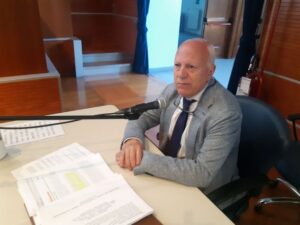
In merito alla differenza tra crocidolite (amianto blu) e crisotilo (amianto bianco) a suo parere non è possibile determinare se l’uno agisca diversamente dall’altro. «Ma è noto che il crocidolite è più pericoloso del crisotilo» ha osservato Colace. La risposta del professor Nicotera: «Lo dicono gli studi epidemiologici. Dal punto di vista molecolare non lo sappiamo».
All’ingegner Nano è stato chiesto di confermare che gli scarti, immessi nel Mulino Hazemag per rientrare nel ciclo produttivo, dovevano essere pretrattati, cioè frantumati. Sì, ha risposto, e la frantumazione andava fatta sotto un letto di pioggia. A quanto risulta, nell’area ex Piemontese, in via Oggero, dove avveniva appunto la frantumazione degli scarti di manufatti di amianto, la ruspa si muoveva avanti e indietro di sicuro a cielo aperto; e magari qualche volta sarà anche piovuto, ma non a comando, solo occasionalmente, e per volontà del meteo.
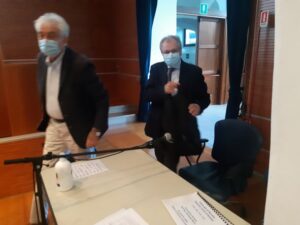
Il pm Colace ha chiesto delucidazioni al professor Cottica in merito alle fibre alternative con cui l’Eternit intendeva sostituire l’amianto; il consulente ha puntualizzato che non gli risulta che l’Eternit avesse concentrato studi in questa direzione, ma era «intenzionata ad abbandonare l’amianto».
Una domanda anche sulla tornitura dei tubi, i cui sfridi di risulta formavano il cosiddetto «polverino», contenente crocidolite. «Lei ha detto che non tutti i tubi erano torniti a secco, ma anche a umido. Con quali attrezzature?» ha interrogato il pm. Risposta: «Con utensili rotanti che raschiavano il tubo». «E secondo lei non provocavano attrito?». Risposta: «E’ probabile».
Ultima precisazione: «Non ritiene che gli indumenti di lavoro, che venivano portati a casa e lavati dalle mogli (tra le quali c’è un’incidenza di mesoteliomi), fossero un veicolo di fibre di amianto?». Risposta: «Credo che, sì, gli indumenti fossero un veicolo di amianto».
PROSSIMA UDIENZA
La prossima udienza in Corte d’Assise a Novara si terrà mercoledì 22 giugno. Sarà esaminato il consulente della difesa Andrea D’Anna, professore di Ingegneria chimica, dei Materiali e della Produzione industriale dell’Università Federico II di Napoli.
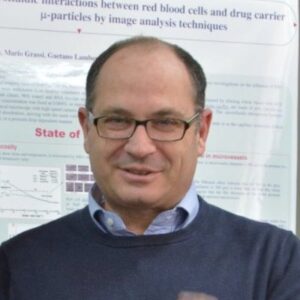
E’ slittata all’11 luglio la data in cui verrà ascoltato – in esame e controesame – il consulente americano Gary Marsh, docente dell’Università di Pittsburgh: era atteso per il 16 maggio, ma per motivi tecnici non era riuscito a partire da New York.
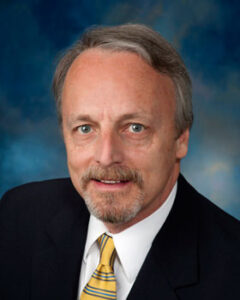
PROCESSO A CAVAGNOLO
E’ attesa per il 14 luglio la lettura del dispositivo di sentenza da parte della Corte d’Appello di Torino che ha giudicato, in secondo grado, l’imputato Stephan Schmidheiny nel filone del processo Eternit Bis riguardante due morti di Cavagnolo. Il pg della procura generale Carlo Maria Pellicano ha chiesto la conferma della condanna di primo grado a 4 anni. I difensori Di Amato e Alleva hanno insistito per l’assoluzione. La Corte di Torino è presieduta da Flavia Nasi, affiancata da Maria Alvau e Ivana Pane.
Nella foto grande, in apertura, alcuni famigliari e attivisti al processo Eternit Bis. Il presidente della Corte d’Assise Gianfranco Pezone ha revocato il decreto che limitava le presenza in aula, come precauzione anti-covid. Ora le udienze sono a porte aperte, chiunque può presenziare.
Translation by Vicky Franzinetti
Eternit Bis trial May the 30th, 2022 Hearing
by
Silvana MOSSANO
The 392 names of men and women from the Casale area who are listed as victims in the Eternit Bis trial (where the defendant Stephan Schmidheiny is called to answer for their deaths) share a fate: their lives were ended by mesothelioma, the asbestos cancer.
392 diagnoses varied by type – pleura or peritoneum; epithelioid, sarcomatoid or biphasic – but according to the Prosecution (PPs Dr Gianfranco Colace and Dr Mariagiovanna Compare) all were due to the onset of mesothelioma. Every diagnosis, from the most remote to the most recent were assessed by pathologists, consultants of the Prosecution before being included in that ominous list: Dr Piergiacomo Betta (deceased in 2015; he examined hundreds of cases, both as Head of Pathology in Casale and Alessandria, and as expert witness for the Prosecution at the Eternit trial in Turin), Drs Donata Bellis and Narciso Mariani. Clearly the defence Astolfo Di Amato and Guido Carlo Alleva asked their expert witnesses to verify the diagnoses.
The work was carried out by Professor Massimo Roncalli, a renowned pathologist and professor at the Irccs Humanitas in Milan, who spoke at the May the 30th hearing before the Novara Assize Court.
The expert was shown the evidence (slides and medical records) in the offices of the court police of the Turin Public Prosecutor’s office. He examined it between September the 3rd, 2021 and January the 21st, 2022. This was the same material the prosecution’s experts had previously examined: Prof Roncalli concluded as follows: of the 392 cases, he was able to analyse 354, while for the remaining 38 he could no longer find adequate or available material to carry out an accurate and comprehensive examination. For all 354 cases, he classed them into three levels: 1) certain (equivalent to an indisputable diagnosis’), 2) probable, 3) possible (i.e. with a degree of uncertainty of around 50 per cent). In terms of numbers and percentages, here is the final outcome of Roncalli’s examination: out of 354 cases, 140 were considered certain (i.e. around 40 per cent), 116 probable (i.e. 32 per cent), 98 possible (i.e. 28 per cent). Before presenting the result, the expert outlined the premises of his work. ‘A pathologist,’ he said, ‘has an ethical duty to prove that a diagnosis is correct beyond doubt. Experience counts,’ he continued, ‘but instrumental investigations that allow the diagnosis to be ‘objective’ beyond the pathologist’s experience count even more’. Nowadays immuno-histo-chemistry is the diagnostic technique of choice. The professor emphasised that his assessments were made ‘with the eyes of today, i.e. by verifying, through the most up-to-date ‘markers’, even the less recent diagnoses, to ascertain that they were indeed mesotheliomas and not, instead, other forms of cancer that have similar symptoms and can be confused with mesothelioma. For example: lung adenocarcinomas and lymphomas, breast, ovarian or lung carcinomas, or pleural metastases from primary gastrointestinal tumours, or of the kidney, ovary, prostate, pancreas. ‘I would not be able to look with the eyes of the past,’ he emphasised, ‘if I did, I would be inaccurate and not objective in my assessments’ he added.
True. And, in putting on the ‘eyes of today, of the 354 cases examined, Professor Roncalli did not exclude any, albeit with varying degrees of certainty compared to the assessments of the prosecution consultants who had examined those cases some time ago. There is no reason to doubt that the prosecution experts also used the ‘spectacles of today’; nor did Roncalli raise any doubts to that effect.
In the past, there was no immuno-histo-chemistry, there were none of the currently available markers (and studies are in progress to find more advanced ones), but pathologists used the best diagnostic techniques of the time: it is worth remembering that the Pathology Department headed by Dr Betta at the time had quality certification, which he himself demanded, before the University required it. In addition, however, the instrumental findings were examined with the ‘lens’ of experience. At the November 22nd 2021 hearing, Pathologist Dr Donata Bellis had explained: ‘If the only deciding factor were the staining of the slides using immunohistochemistry, a machine performing this function would suffice and a pathologist would not be necessary. A diagnosis is made and confirmed by evaluating and comparing several features: from the morphology of the tumour, to radiographic (x-ray, CT, PET), cytological and histological tests, with further verification by immuno-histo-chemistry if the experts deem it necessary ‘.
Professor Roncalli carried out the task entrusted to him by the defence scrupulously, considering ‘several markers with high sensitivity and specificity, because there is no ideal marker present on all mesotheliomas’. As well as classing cases as ‘certain’, ‘probable’ and ‘possible’ cases, he also classed them according to the decade: cases between 1990 and 1999, between 2000 and 2009 and between 2010 and 2019. And he highlighted, ‘greater diagnostic weaknesses’ are found among cases in the first decade. The professor said, ‘mesothelioma is a rare, unfamiliar disease, and therefore diagnosis is difficult’. He repeated that symptoms are not enough to establish that it is mesothelioma several times, and even evidence of a pleural effusion in an X-ray or CT scan can be something else. For example, he reported that a pleural effusion, in most cases, is due to simple pleurisy, i.e. an inflammatory disease of the pleura. His words: ‘Fortunately, the mesothelium rarely undergoes a malignant transformation. Very often it is ‘only’ irritated by inflammatory phenomena (pleurisy)’.
Far from me to dispute the authoritative scientist’s statements, I am only a journalist: Professor Roncalli’s language is that of science and I have the utmost respect for it. But there is another language, on a no lesser plane, that of experience, of ‘practice’, let us say, which deserves equal consideration. To define mesothelioma, albeit in a technical sense, as an ‘unfamiliar’ disease causes a stir in Casale Monferrato and the surrounding area, where it is difficult to find a family that has not suffered deaths due to mesothelioma. And to say, then, that ‘very often’ pleural effusion is caused by pleurisy causes another shock. Those who read ‘pleural effusion’ on the X-ray report (small, modest, extensive, it matters little) have no illusions. How many candles lit in church praying, pleading, while waiting for a cytological or histological test, for a pitifully hoped for diagnosis of pleurisy! But how many times has that ‘effusion’ corresponded ‘only’ to pleurisy? It is difficult, in Casale and the surrounding area, to find any trace of it. Now, we are aware and, indeed, firmly agree, that emotions cannot guide judges. Facts are essential. And Professor Roncalli has done well to set out his objective assessments. Equally objective are those of the public prosecution’s anatomical pathologists. Just as objective – conscientiously and deontologically – must hopefully be the answers to the questions provided by all expert witnesses, of whatever party and on whatever subject. Then there is also the context – vital, emotional, affective – to be assessed and which weighs as much as the science. The context is the harmonious coexistence based on the regulation of relations between people. If this harmony is shaken by wrongdoing, a court of justice is the agreed forum to establish whose fault it was. In a trial, the purpose is to pursue justice. To compensate those who have been wronged. That is why objective science must be combined with living experience.
The Eternit Bis trial in Novara has to assess the whole picture of what happened in Casale. Not just any abstract one. The accounts of witnesses, victims’ relatives or the victims themselves when they were alive are part of the picture, and are no less valid than the indisputable and essential findings of experts.
In the community of Casale, 392 deaths with those symptoms, those diagnoses at different times, those deaths are the consequence of exposure to asbestos that was different than elsewhere. Even in Milan and other large cities there was a ‘natural’ spread of asbestos fibre, but evidently in Casale, a small provincial town, there was more which is demonstrated by the number of people who developed the disease. The number of people who died. Like the 38-year-old young woman, who was born in the same year, 1976, in which the entrepreneur Schmidheiny had taken over the management of Eternit.
Of course, there are ‘chameleon’ tumours, which look like mesotheliomas and, instead, are other forms of cancer: but are we to believe that at Casale there was such a high concentration and repetition of ‘false positives’ on histological examination? And how would we explain it?
CROSS-EXAMINATION OF THREE EXPERT WITNESSES
In the May the 30th hearing, the three defence expert witnesses who had previously spoken were cross-examined by Public prosecutor Gianfranco Colace and specifically, industrial hygienist Danilo Cottica, engineer Giuseppe Nano and Prof Pierluigi Nicotera, an expert in neurodegenerative diseases from the University of Bonn. In answering the PP’s questions, Professor Nicotera reiterated the thesis of ‘chromothripsis’ that triggers mesothelioma; he insisted that ‘a single exposure to asbestos is enough’ to become ill and that ‘the subsequent accumulation of exposure is not relevant for the formation of the tumour and its progression’. This is unproven as the PP’s expert witnesses have shown time and time again. Regarding the difference between crocidolite (blue asbestos) and chrysotile (white asbestos) Prof Nicotera believes it is not possible to determine whether one acts any differently from the other. ‘However, it is known that crocidolite is more dangerous than chrysotile,’ PP Dr Colace noted. Professor Nicotera’s reply: ‘Epidemiological studies say so. From a molecular point of view we don’t know ‘.
Engineer Nano was asked to confirm that the waste, fed into the Hazemag mill to re-enter the production cycle, had to be pre-treated, i.e. crushed. Yes, he replied, and the shredding had to be done under wet conditions. As far as we know, in the former Piemontese area, in Via Oggero, where the crushing of asbestos waste took place, the bulldozer was certainly moving back and forth under the open sky; and it may even have rained sometimes, but only occasionally, and at the behest of the weather. Prosecutor Colace asked Professor Cottica about the alternative fibres with which Eternit intended to replace asbestos with; the expert witness stated that he was not aware that Eternit had concentrated studies in this direction, but that the company was simply ‘intent on abandoning asbestos’. A question was also asked about the turning of the pipes, the resulting scraps of which formed the so-called ‘dust’, containing crocidolite. ‘You said that not all pipes were dry-turned, but also wet-turned. With what equipment?” asked the PP. Answer: ‘With rotating tools that scraped the pipe. “And in your opinion did that not cause friction?”. Answer: ‘Probably’.
Last question: ‘Do you not think that the work clothes, which were taken home and washed by the wives (among whom there is a high incidence of mesotheliomas), were a vehicle for asbestos fibres?’ Answer: ‘I believe that, yes, the clothing was a vehicle for asbestos’.
NEXT HEARING
The next hearing in the Assize Court in Novara will be on Wednesday, 22 June, 2022. Defence expert witness Andrea D’Anna.
The US expert witness Prof Gary Marsh, a former professor at the University of Pittsburgh, will be heard – and cross-examined on July the 11th : he was expected on 16 May, but for technical reasons he was unable to leave New York.
CAVAGNOLO TRIAL
On 14 July, the Turin Court of Appeal is expected to announce the appeal of the verdict on the Stephan Schmidheiny trial. The defendant was convicted in the lower court trial for two deaths in Cavagnolo. Chief Prosecutor, Dr Carlo Maria Pellicano asked for confirmation of the first degree sentence (four years). Defence lawyers Di Amato and Alleva insisted on acquittal. The Turin Court was presided over by Dr Flavia Nasi, assisted by Drs Maria Alvau and Ivana Pane.

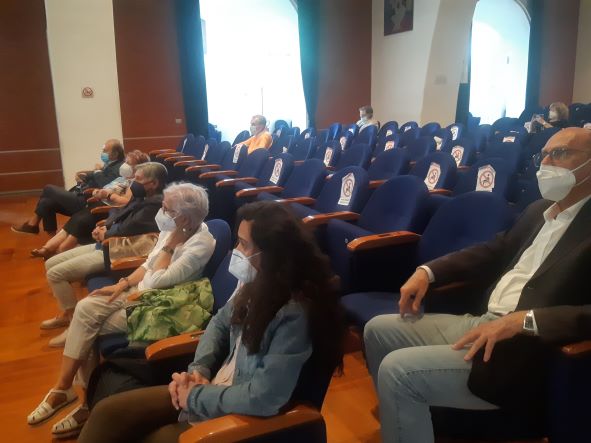
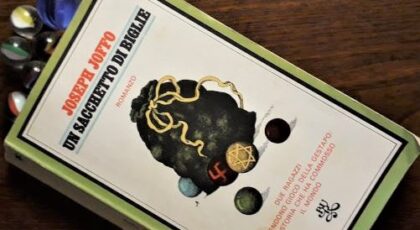
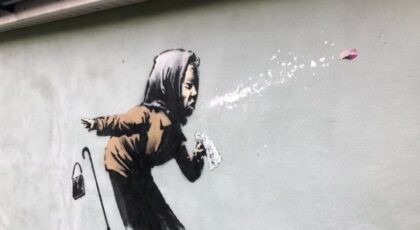
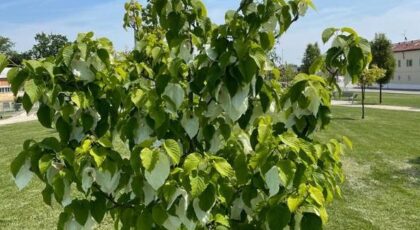
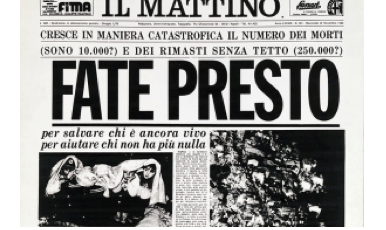
Ho letto due volte la dettagliata descrizione da te esposta degli esperti sia della difesa che dell’accusa, voglio credere e spero che sia fatta giustizia. Non è possibile che finisca in una bolla di sapone. Casale e i suoi abitanti meritano una giustizia senza ombre e soprattutto per tutte le lacrime che sono già state versate. Grazie Silvana.
Sei come sempre puntuale precisa tecnica cara Silvana. Ma come scrivi giustamente non si può chiedere ai giudici emotività … ma noi si chiede solo GIUSTIZIA che pare tardi ad arrivare. Nel frattempo nel nostro Monferrato si continua a morire per questa “rara” malattia. Non ci resta che attendere se ne avremo il tempo. Un ricordo nella preghiera per i nostri cari defunti e chi sta soffrendo ancora oggi. Grazie Silvana !
Grazie Silvana! Ottima sintesi di argomenti complessi e ottime e centratissime considerazioni fondamentali!